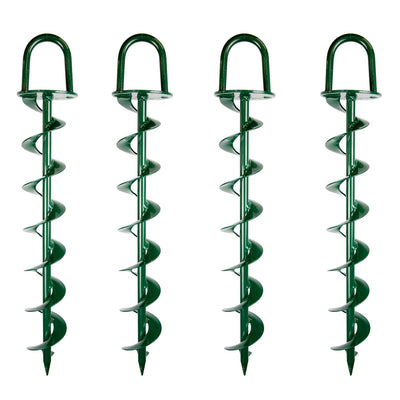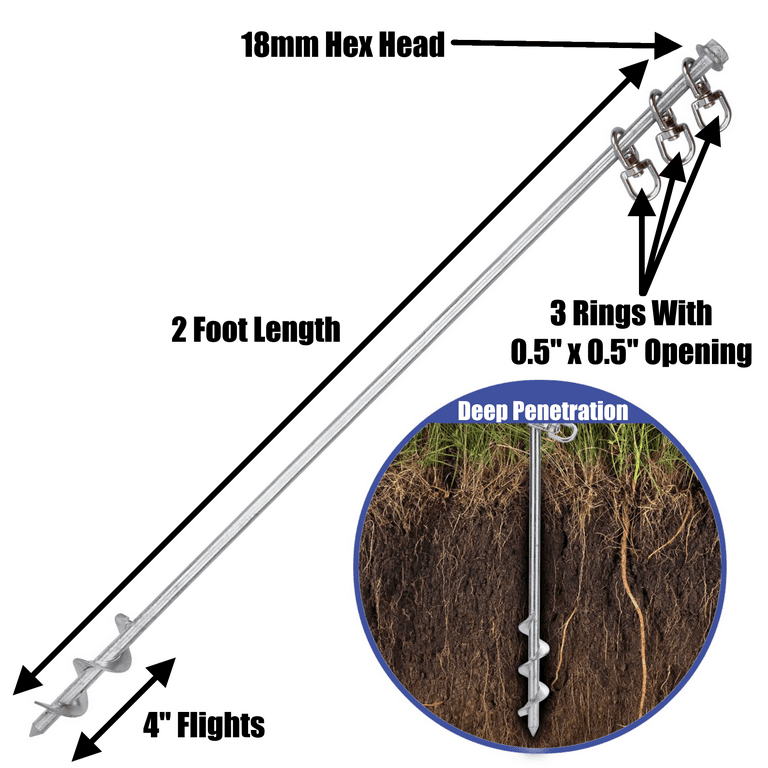Why a Secure Ground Anchor Helps for Motorcycles
Why a Secure Ground Anchor Helps for Motorcycles
Blog Article
Understand Why Ground Support Is Necessary for Safety and Sturdiness
Ground supports are a vital part in building, providing critical assistance and security for numerous structures. Recognizing the different kinds and applications of ground supports can illuminate their essential duty in making certain security and longevity.
Duty of Ground Anchors in Construction
Ground anchors play an essential role in construction by giving essential assistance and security to structures. These tools are designed to move lots from a structure to the ground, ensuring that buildings and other facilities remain protected under various problems. Ground anchors are specifically vital in situations where dirt problems are unsteady or where there is a danger of lateral activity, such as on inclines or near bodies of water.
The installation of ground anchors involves exploration into the earth to reach stable dirt or bedrock, where the anchors can be safely anchored. This procedure not only boosts the architectural stability of a job however also reduces the threats related to soil disintegration and changing. In addition, ground anchors can be employed in momentary frameworks, such as building and construction sites, where they provide essential stablizing throughout the building process.
Ground supports likewise add to the longevity and sturdiness of frameworks by lowering the chance of settlement and failure. Ground Anchor. By efficiently dispersing and handling tons, these important components are important in keeping safety standards and making sure the dependability of numerous construction tasks. On the whole, the value of ground supports in construction can not be overstated, as they are integral to successful engineering techniques
Sorts Of Ground Supports


While various types of ground anchors exist, each offers particular applications and conditions within building and construction projects. One of the most common kinds include mechanical anchors, grouted supports, and driven anchors.
Mechanical anchors, such as growth anchors, use a mechanical action to protect the anchor within the substratum - Ground Anchor. These are often utilized in light-weight applications, like securing fixtures to masonry or concrete
Grouted anchors, on the various other hand, entail piercing a hole, positioning a steel rod or wire, and after that filling the annular space with grout. This approach is ideal for high-load circumstances, providing improved stability and resistance to dynamic pressures commonly found in hefty construction.
Driven supports are generally set up by driving a steel rod or pipeline into the ground, making them ideal for short-lived applications such as securing scaffolding or formwork. They are quick to set up and can be removed quickly when no much longer needed.
Other customized anchoring systems consist of helical anchors, which are screw-like gadgets utilized in different dirt conditions, and deadman anchors, which count on the weight of a buried challenge provide security. Each sort of ground anchor is created to meet certain design demands, making sure safety and security and structural honesty.
Benefits of Utilizing Ground Anchors
The benefits of using ground anchors in construction jobs are considerable, boosting both security and architectural performance. Ground supports supply vital resistance versus side forces, such as dirt movement, wind tons, and seismic activity. This resistance helps keep the stability of structures, preventing prospective failings that might bring about harmful situations or expensive repair work.
Moreover, ground anchors help with the efficient transfer of loads from structures to the bordering dirt, guaranteeing a more balanced distribution of weight. This tons transfer lowers the danger of changing or settling, which can compromise the honesty of a building gradually. By employing ground anchors, engineers can additionally create a lot more effective layouts, as they permit slimmer structural aspects while maintaining safety and security requirements.
Additionally, ground supports are versatile and versatile to different dirt conditions and job needs. Their setup can typically be completed rapidly and with very little disturbance to the surrounding environment, making them an efficient option for lots of building applications. Ultimately, making use of ground supports improves not just the sturdiness of structures but likewise adds to a more secure working setting for building personnel and future owners.
Usual Applications and Uses
Many building projects leverage ground supports for their effectiveness in improving stability and safety. These versatile elements are generally used in various applications across the construction and civil design fields. One widespread application remains in keeping walls, where ground anchors offer the essential support to stop soil activity and keep architectural honesty.
In addition, ground anchors are important in securing short-term structures, such as scaffolding and shoring systems, ensuring they stay secure throughout construction tasks. In the realm of structure assistance, they are made use of to enhance existing frameworks, especially in locations susceptible to ground settlement or shifting soil problems.
Ground supports additionally locate comprehensive usage in slope stablizing tasks, where they aid mitigate landslide dangers by anchoring the soil to stable rock formations. One more significant application remains in the setup of wind generators, where they secure the base versus side pressures generated by wind, making certain functional safety and security and longevity.
Moreover, ground supports are employed in tunneling jobs to maintain the surrounding ground throughout excavation. Their varied applications highlight the essential duty ground supports play in maintaining security and longevity in different construction situations.
Setup Best Practices
Effective application of ground anchors in different construction projects rests on effective installation practices. Proper installment is critical to make sure the supports meet their intended function and preserve architectural stability in time. Secret best methods include extensive site assessment, which involves reviewing dirt problems, load requirements, and environmental aspects that might affect anchor efficiency.
Prior to setup, it is important to select the ideal kind of ground support based upon the specific application and soil attributes. Utilizing top notch materials and adhering to manufacturer specifications will certainly boost the anchor's sturdiness and efficiency. During setup, guarantee that the anchor is put at the correct angle and depth, as these aspects significantly affect load-bearing ability.
Furthermore, utilizing Ground Anchor appropriate tools and techniques is essential, including exploration or driving methods customized to the site conditions. After this article installment, conducting lots screening can verify the anchor's efficiency and recognize any type of potential issues early. Routine evaluations are also suggested to keep track of the problem of the supports and bordering soil. By complying with these installment best practices, designers and service providers can enhance the safety and security and durability of frameworks reliant on ground anchors.

Conclusion
In recap, ground supports are important parts in building and construction, considerably improving safety and security and longevity. Their capacity to move loads properly mitigates risks related to unstable dirt and lateral motions. The varied types and advantages of ground anchors, coupled with their varied applications, highlight their significance in both long-term and momentary structures. Complying with setup finest practices makes sure optimum efficiency, therefore adding to the total integrity and longevity of building and construction tasks.
The installment of ground supports includes drilling right into the earth to reach secure dirt or bedrock, where the supports can be safely anchored.The advantages of using ground supports in building and construction jobs are significant, boosting both safety and security and architectural efficiency.Various building tasks utilize ground anchors for their effectiveness in enhancing stability and safety and security.Effective application of ground supports in numerous building and construction jobs hinges on efficient installation practices.In recap, ground supports are vital components in building, considerably improving security and toughness.
Report this page